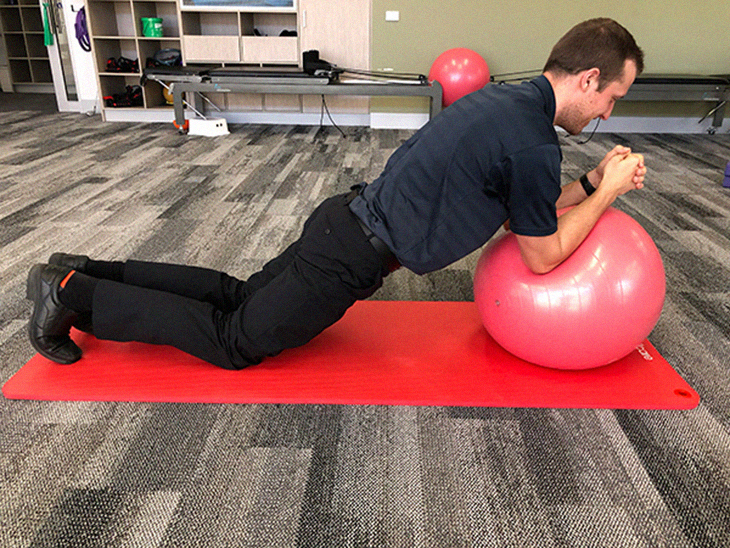Effectively Address Hypertension And Lower Blood Pressure Through Isometric Resistance Training

There are many ways to lower blood pressure. Doctors often recommend diet and exercise mixed with medicines. However, studies have recently discovered how isometric resistance training may be one of the most effective methods.
Previous research shows how isometric resistance training (IRT) can effectively lower systolic and diastolic blood pressure. However, the exercise comes with some safety concerns. The latest and newest meta-analysis of 24 primary studies looks into the effectiveness of this form of exercise and considers its safety once more. At the end, the findings show how IRT is both safe and effective when it comes to addressing hypertension.
The research has suggested how IRT can actually reduce systolic and diastolic blood pressure. Doctors, however, have stopped recommending this to their patients because of concerns about its safety. The concerns are based on the idea that IRT can increase blood pressure while the exercises are being executed, especially when it involves the use of large muscle groups or is high in intensity.
Researchers from the University of New South Wales (UNSW) in Sydney, Australia, wanted to look into the idea further. They made a new analysis of previous studies that explored the IRT’s safety concerns. The meta-analysis they made suggests how IRT can actually safely lower blood pressure. In fact, the method may even be safer than the other forms of exercise.
Dr. Matthew Jones, the senior author of the study, is an accredited exercise physiologist and lecturer in the School of Health Sciences, Faculty of Medicine & Health at UNSW. Dr. Jones said, “IRT is a time-efficient means of reducing blood pressure, needing only 12 minutes a day, 2 to 3 days per week to produce the effects we found in our review.”
The study is elaborated in the journal Hypertension Research.
All about Isometric Resistance Training
IRT is a type of exercise that requires the application of tension to muscles without having to move the surrounding joints. For example, a person contracts a muscle or muscle group, and then he or she holds it in place for a certain period f time. Dr. Jones elaborated, “While the studies included in our review normally used a specialized handgrip device, it’s possible we would see the same effects simply by asking participants to make a fist and squeeze it at a certain intensity for the prescribed amount of time. This means IRT could easily be performed while participants are sitting down watching TV.”
Existing Research Analyzed
The researchers collated reports from 24 randomized control trials. They analyzed all these. The studies involved a total of 1,143 participants with an average age of 56 years. Of the entire group, 56 percent were women. The participants were those who had any or all of the following:
- High-normal blood pressure: A systolic blood pressure (SBP) of 130–139 millimeters of mercury (mm Hg).
- Grade 1 hypertension: An SBP of 140–159 mm Hg.
- Grade 2 hypertension: An SPB over 160 mm Hg or a diastolic blood pressure (DBP) of more than 100 mm Hg.
The researchers then only included IRT trials, which had lasted 3 weeks at least. The time was based on previous research that suggests how this is the minimum length of time to make an impact in terms of blood pressure change.
The Effect of IRT on Person’s Blood Pressure
The study made showed optimistic promising results. Dr. Jones said, “We were interested in how IRT reduced blood pressure in people with high blood pressure. We also wanted to know whether IRT was safe. We found that IRT was very safe and caused meaningful changes in blood pressure — almost as much as what you’d expect to see with blood pressure-lowering medications.”
When the researchers analyzed the measurements that were taken as part of regular clinical practice, they discovered that SBP reduced by an average of 6.97 mm Hg among the IRT group. The findings were placed side by side with the control group. DBP also decreased by an average of 3.86 mm Hg. The researchers also saw that aorta, or central, blood pressure, which was an important indicator of cardiovascular disease, was lowered by an average of 7.48 mm Hg for SBP and 3.75 mm Hg for DBP. Moreover, the average DBP over 24 hours also went down. This was to a lesser degree, with a reduction of 2.39 mm Hg.
In an email exchange made, University of Washington cardiologist Dr. Alec J. Moorman, M.D., FACC, who was not part of the research team, talked to Medical News Today about it. He said that the study included three comparisons of IRT vs. aerobic exercise in which the aerobic exercise was able to produce a more significant reduction in blood pressure. He explained, “The ACC/AHA Prevention guidelines recommend 150 minutes of moderate intensity aerobic activity or 75 minutes of vigorous intensity aerobic activity per week, as this volume (“dose”) of exercise lowers [cardiovascular] risk by about 30 percent.”
IRT may still be important for those who are unable to engage in aerobic exercise. As Dr. Jones explained, “It’s particularly exciting for people who may have difficulty performing more ‘traditional’ exercise, such as walking, cycling, or strength training, knowing they have another exercise type in their toolkit to help manage their high blood pressure.”
“In fact,” Dr. Jones further stated, “there were actually lower rates of adverse events in older adults, making it a very appealing mode of exercise, especially in those with mobility restrictions who may not be able to do other exercises like aerobic or dynamic resistance training.”
Cardiologist Dr. Jennifer Wong of MemorialCare Heart and Vascular Institute at Orange Coast Medical Center in Fountain Valley, CA, who was also not involved in the study, said to MNT about the research, “Speaking to our patients about it, I’m sure we have a much easier time telling them to do a handgrip for 15 minutes.”
Dr. Wong also suggested that IRT “may even have an additive effect in combination with hypertensive medications. I do think it’s reasonable to try in conjunction with the other therapies like low salt diet and (…) medication that’s been well-studied.”
The Safety of IRT
In the IRT trials made, the analysis conducted found no serious and adverse events. Out of the two dozen participants in studies, there were only seven reported adverse events, and these mostly involved joint or muscle pain. None of the complaints made were severe enough to cause a participant to withdraw themselves from the study. In fact, many of them used handgrips during exercise.
“Importantly, this meta-analysis demonstrates that IRT is safe,” said Dr. Moorman. He also added, “I would recommend something like a handgrip device or doing wall sits.” According to Dr. Wong, “I would feel comfortable recommending the handgrip exercise, especially given that most of the trials they looked at here were using hand exercises, and very few adverse effects seem to have been seen in these trials. I might even recommend it with additional aerobic exercise.”
Dr. Wong also noted that the two lower-limb trials included in the research also produced no adverse effects.
Limitations of the Study
“All included trials were at a high risk of bias, downgrading the quality of the evidence,” wrote the authors. Because of this, the authors reduced all reported reductions in SBP and DBP by 2 mm Hg to reflect the high chances of bias in the original studies made. Moreover, they lowered the values by an additional 1 mm Hg to make room for the inconsistencies between the methods and measurements that the 24 different sets of researchers made use of.
While Dr. Moorman said that the study still has value, he also said to practice caution when needed. He explained, “The advantage is combining several studies to pool data, but these types of analyses can be prone to several types of bias and error, and that can be amplified.”



